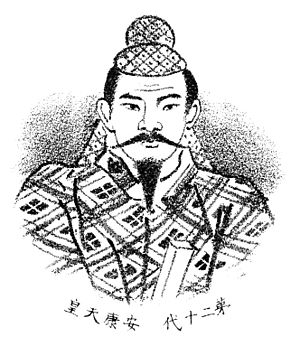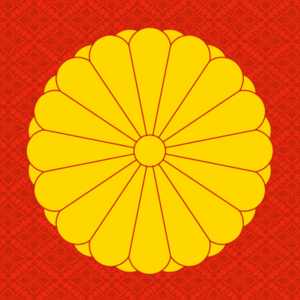Emperor Ankō facts for kids
Quick facts for kids Ankō |
|
|---|---|
| Emperor of Japan | |
 |
|
| Reign | legendary |
| Predecessor | Ingyō |
| Successor | Yūryaku |
| Born | legendary |
| Died | legendary |
| Burial | Sugawara no Fushimi no nishi misasagi (Nara) |
Emperor Ankō (安康天皇, Ankō-tennō) was the 20th emperor of Japan. He is listed in the traditional order of succession.
Historians believe that many details about Emperor Ankō's life are part of legend. However, they are also likely based on real events. The name Ankō-tennō was given to him after his death by people who lived much later.
We don't have exact dates for when Emperor Ankō lived or ruled. The names and order of these early emperors were officially confirmed much later. This happened during the time of Emperor Kammu, who was the 50th ruler of the Yamato dynasty.
Contents
Ancient Stories About Emperor Ankō
The Kojiki and Nihon Shoki are two very old Japanese books. They tell us that Ankō was the second son of Emperor Ingyō.
Some of these ancient stories suggest that he might have been involved in his father's death.
What We Know About Ankō's Reign
We know very little about what happened during Emperor Ankō's time as ruler. There isn't much information available about emperors before the 29th ruler, Emperor Kimmei.
- 462: Records from China show that a group from Japan visited the court of the southern Sung Dynasty. The "king" mentioned in these Chinese documents was probably Emperor Ankō.
It is believed that Emperor Ankō himself was murdered in the third year of his rule.
After Emperor Ankō's Death
The official name given to this emperor after he died is called his posthumous name. This name was made official many centuries after Ankō was believed to have lived.
The Imperial Household Agency says that the emperor's final resting place is in an tumulus (kofun). This is a type of earthen burial mound. People honor this emperor at a special memorial Shinto shrine called a misasagi. This shrine is connected to his burial mound.
Related Pages
| Preceded by Emperor Ingyō |
Legendary Emperor of Japan Ankō 453-456 (traditional dates) |
Succeeded by Emperor Yūryaku |
See also
 In Spanish: Ankō Tennō para niños
In Spanish: Ankō Tennō para niños



